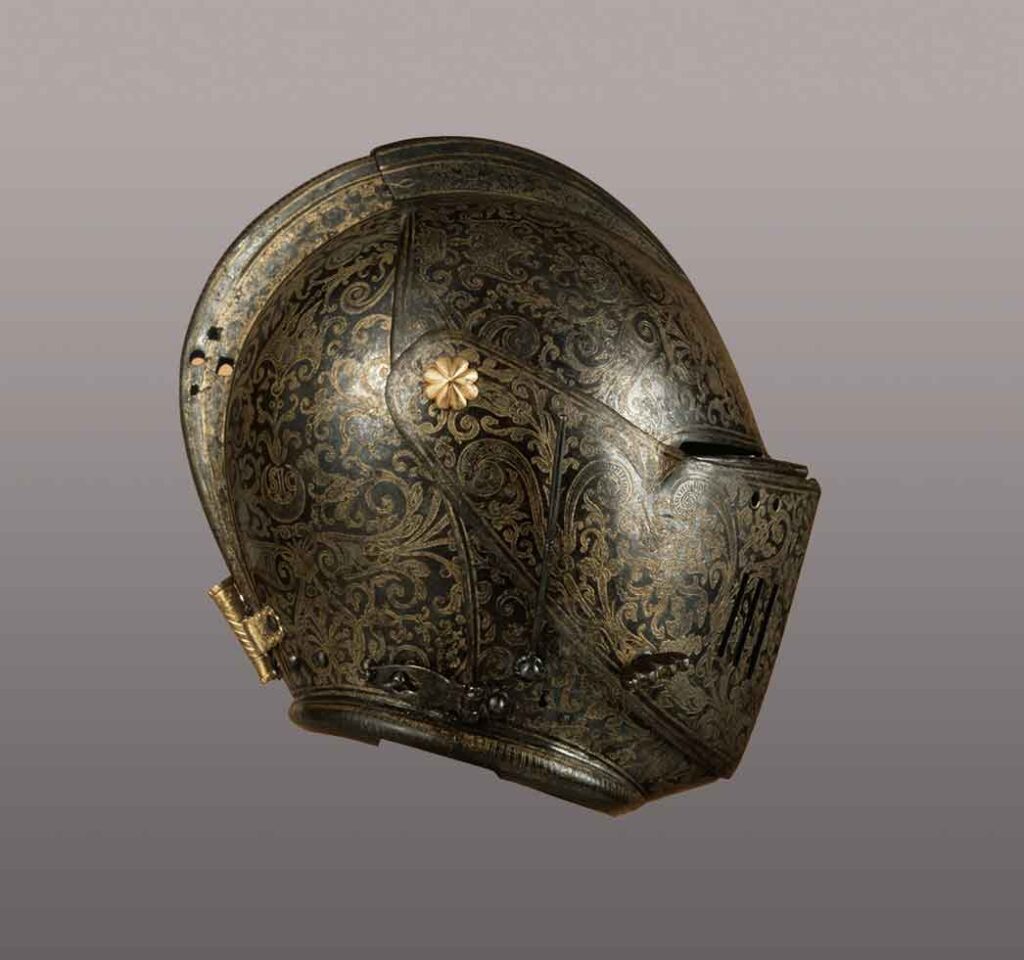Gonzaga Helmet
Pompeo della Cesa , ca. 1591
Description

In this work, the artist demonstrates an extraordinary ability to work steel, almost as if it were fabric, covering the entire surface of the helmet and creating effective contrasts between the burnishing of the background metal and the gilding of the engraved decorations with plant motifs. The crescent moon with the motto “SIC,” an acrostic for “Sic Illustrior Crescam” (“so I will grow nobler”), which recurs several times, was the feat of Vincenzo I Gonzaga (1562-1612; duke of Mantua and Monferrato from 1586). It fits perfectly into the giral decoration of leaves and flowers, blending in with it and becoming an integral part of it. The transposition onto steel of the designs that adorned the velvets fashionable in those times is characteristic of Pompeo della Cesa’s production.
Data Sheet
Author
Pompeo della Cesa, ca. 1537-1610
Date
ca. 1591
Material and technique
Engraved and gilded steel
Measures
5.275 g
Acquisition
Gian Giacomo Poldi Pezzoli bequest, 1879
Inventory number
2591
location
Armoury
The Hall of Arms was the first room set up in the House Museum and was located on the main floor, in the Trivulzio Hall. The current layout, from 2000, is the work of the great sculptor Arnaldo Pomodoro, who interprets the theme of the armory by enhancing its historical identity. Gian Giacomo Poldi Pezzoli, a passionate collector of antique weapons, had entrusted the early work to architect Giuseppe Balzaretto and stage designer Filippo Peroni, with the collaboration of Paolo Gazzoli for the stucco work and Pompeo Bertini for the stained-glass windows. The theatrical effect of the Neo-Gothic style dominated the hall, crowded with banners, weapons, armor, trophies, display cases, and mannequins. The room was completely destroyed during World War II, and the precious objects moved to the ground floor. The collection consists mainly of pieces from the Milanese and Brescian Renaissance, with a focus on parade weapons. A second important group consists of German firearms from the 16th and 17th centuries.
collection
Arms and Armour
Arms and armour were the first passion of Gian Giacomo Poldi Pezzoli, who commissioned the set-up of a Neo-Gothic style crowded armoury. In the collection, there are about one thousand Western and Oriental arms and armours. Among them, stand out the Renaissance parade armours made in Milan by Pompeo della Cesa and the 16th century firearms from Brescia and Germany.
